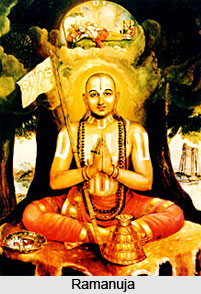 Various theories have been purported for the proper origination of the word `Dravida` which is a Sanskrit word. It has been said by the scholars that the word is behind the formation of the etymon of the word Tamil. Others hold that the word `Dravida` may be originated from Sanskrit `Drava` that connotes water or sea, thus signifying the people of India who lived close to the sea.
Various theories have been purported for the proper origination of the word `Dravida` which is a Sanskrit word. It has been said by the scholars that the word is behind the formation of the etymon of the word Tamil. Others hold that the word `Dravida` may be originated from Sanskrit `Drava` that connotes water or sea, thus signifying the people of India who lived close to the sea.
Furthermore, the languages of South India are considered to be the Dravidian languages. As per the general Indian legend, the Dravidian people resided in India before the advent of Aryans. The Dravidians were flourishing and developing their tradition in the southern India. The physical characteristic of this group was that they were dark-skinned and short in height. The Dravidians are said to be the composers of religious treatises and fine hymns in Tamil language and they were the founders of magnificent stone temples in and around India. The Dravidians prospered in several kingdoms and the temples established by the Dravidians got religious importance by the visitors of Hindu religious heritage.
The Dravidians have influenced Hinduism in a great manner. They are evident among the masses specially the elite in the South. It is believed that they were polytheists and also held in veneration certain types of horned animals. Many elements of Tantra are a heritage from the Dravidians. Tree worship, Zoolatry and belief in Snake-spirits (Nagas) are also traceable in the Indus Valley civilisation. The masses in our villages and cities worship all tree, water, snake, animals and Shiva and his consort. Many of the rites are traceable to the earliest culture of the Dravidians. Dravidians have given us the philosophy of non-dualism of Lord Shiva, the philosophic basis of Bhakti as enunciated by Ramanuja, Madhava and Nimbarka. Religious architecture is greatly indebted to Dravidians.
The Dravidians have contributed to the cult of Lord Shiva, the worship of Mother Goddess or Shakti and also the institution of Yoga. Dravidians have given us various symbols associated with these gods and goddesses for example the lion and the bull. Many features of the temple architecture especially those of the South have been of the Dravidian origin. They were also acquainted with the working of metals. So far as the Hindu culture is concerned much of its basis is a contribution from the Dravidians. Among the articles of food, the Dravidians have given us wheat, rice, milk, pulses, vegetables, cotton dress, dwellings and few customs also. The Dravidians have adopted Sanskrit language. The Dravidians have contributed important elements to the religious emphasis, the social structure, the manners and customs, the arts which constitute the Hindu civilisation. The Dravidians have also given us great philosophers like Shankar, great products of artistic genius in the realms of dance and temple architecture and also the sect called Shaivism. Besides in the early period of Muslim invasion Dravidians kept intact the products of Aryan thought and culture, thereby preserving for the generations to come the bases of Indian culture. Dravidians are the native Indian community who were the founder of Hindu religious and social systems.
The Dravidians established a particular civilisation that is known as Dravidian civilization. As per some research scholars, the speakers of the proto-Dravidian languages are the founder of Dravidian civilisation. This civilisation is said to be in existence before the advent of Indo-Aryans in India and this pre-Vedic civilisation is basically the civilisation of the people who used to speak proto-Dravidian languages.



















